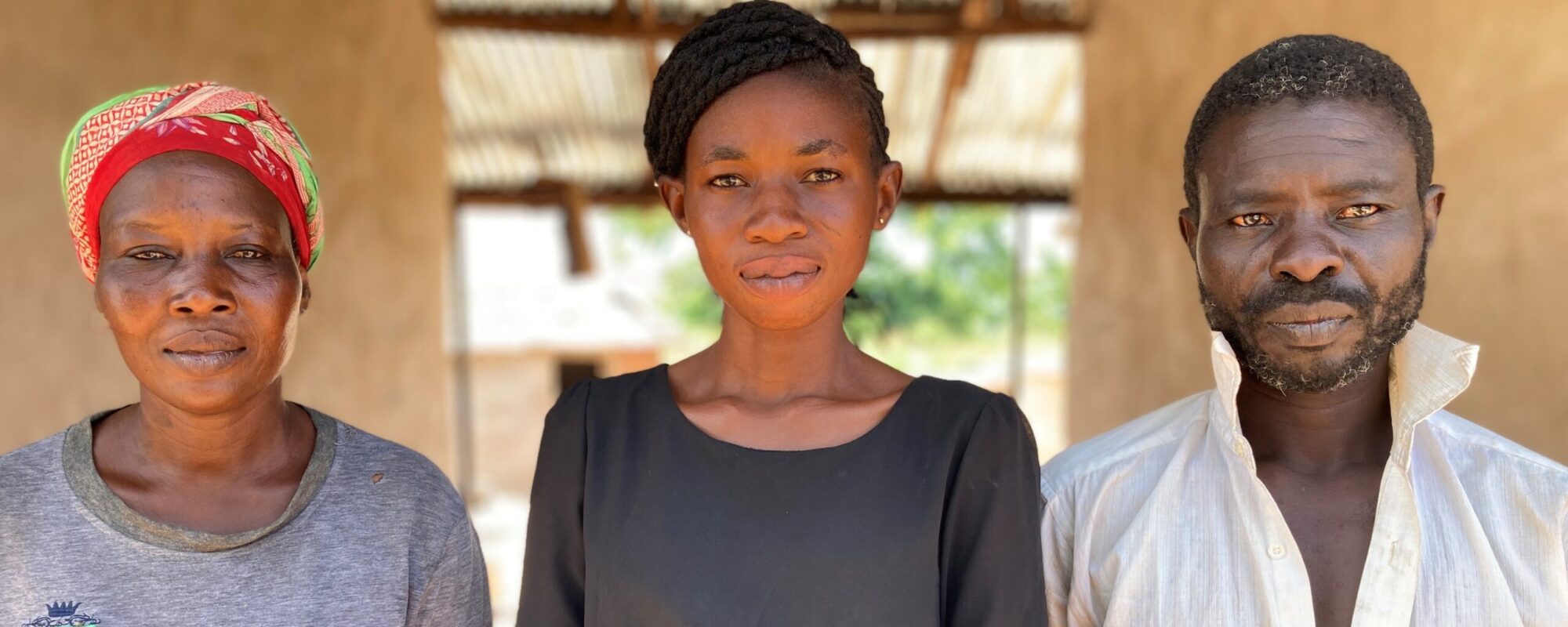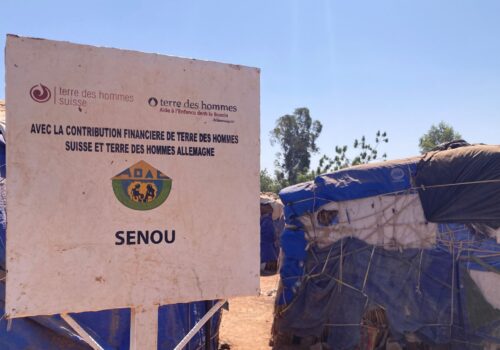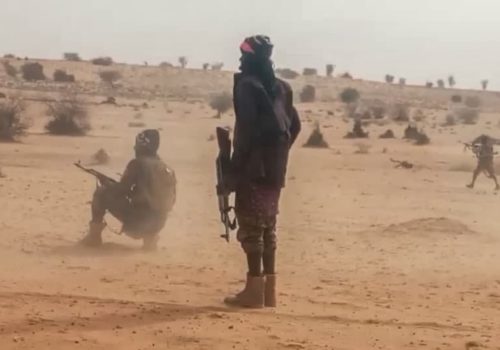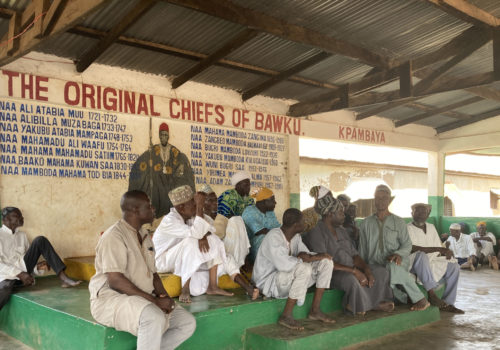SORI No. 1, Ghana — Mercy Laar was resting outside her house last May when she heard that a dozen young men were threatening to burn down the ethnic Fulbe households on the edge of the village. The 25-year-old farmer immediately called the other members of a community mediation team established for precisely such scenarios. Within minutes, the group had assembled and intercepted the angry mob on the dirt pathway out of town.
“It was very tense,” the normally soft-spoken Laar recalled. The men tried to push past, saying that a Fulbe herder had attacked their fellow farmer, Palmark Sambia, and drawn blood. The mediators expressed sympathy, but explained that if the youths burned down the Fulbe houses, Sambia would likely receive no compensation and everyone involved would be punished. “Let’s find the whole story first,” Laar remembered telling members of the crowd, who like most people in Sori No. 1 belong to the Gonja ethnic group.
As the mediators spoke, the crowd’s anger began to dissipate. It emerged that the dispute stemmed from Fulbe cattle trampling Sambia’s maize field. The team agreed to look at Sambia’s field. After seeing that the destruction was not as extensive as he had made it out to be, the mob retreated to the village, leaving the Fulbe hamlet untouched. Violence was forestalled that day in Sori No. 1, but conflicts between farmers and herders in Ghana claim dozens of lives every year and result in hundreds of thousands of dollars of livestock killed and crop damage.
Regional and Western governments, aid groups and experts are becoming increasingly concerned about addressing local sources of conflict in West Africa, fearing festering grievances will help jihadist insurgents in neighboring Burkina Faso and Mali recruit fighters. The United States Agency for International Development and the World Bank, among others, have been directing resources toward programs intended to prevent such disputes from escalating. Community mediation teams like the one in Sori No. 1 are among the solutions being pioneered. However, while the arbitrators have helped avert conflict and brought communities closer together, their work is hampered by the fact that they, too, are becoming ensnared in the same complicated local politics that exacerbate conflicts between farmers and herders.
* * *
Most herders in Ghana hail from the Fulbe ethnic group, whose members have migrated annually for generations with their livestock between southern Burkina Faso and northern Ghana following seasonal rains. Over time, settled farmers and Fulbe herders in northern Ghana built mutually beneficial relations trading milk, yogurt, meat and other animal products for cereals and vegetables. In the last century, some Fulbe settled in small hamlets on the outskirts of more established communities and taken up a mix of farming and herding. While those Fulbe in the north maintain generally decent relations with their immediate neighbors, they have never been accepted as Ghanaian citizens and complain of marginalization and discrimination the moment they leave their small settlements.
Following catastrophic droughts in West Africa in the 1960s and 1970s, herders pushed further south during their annual migrations to access greener pastures. Meanwhile, the government and international donors, understandably concerned with the country’s inability to feed itself, brought more land under cultivation by distributing fertilizers and improved seed varieties.
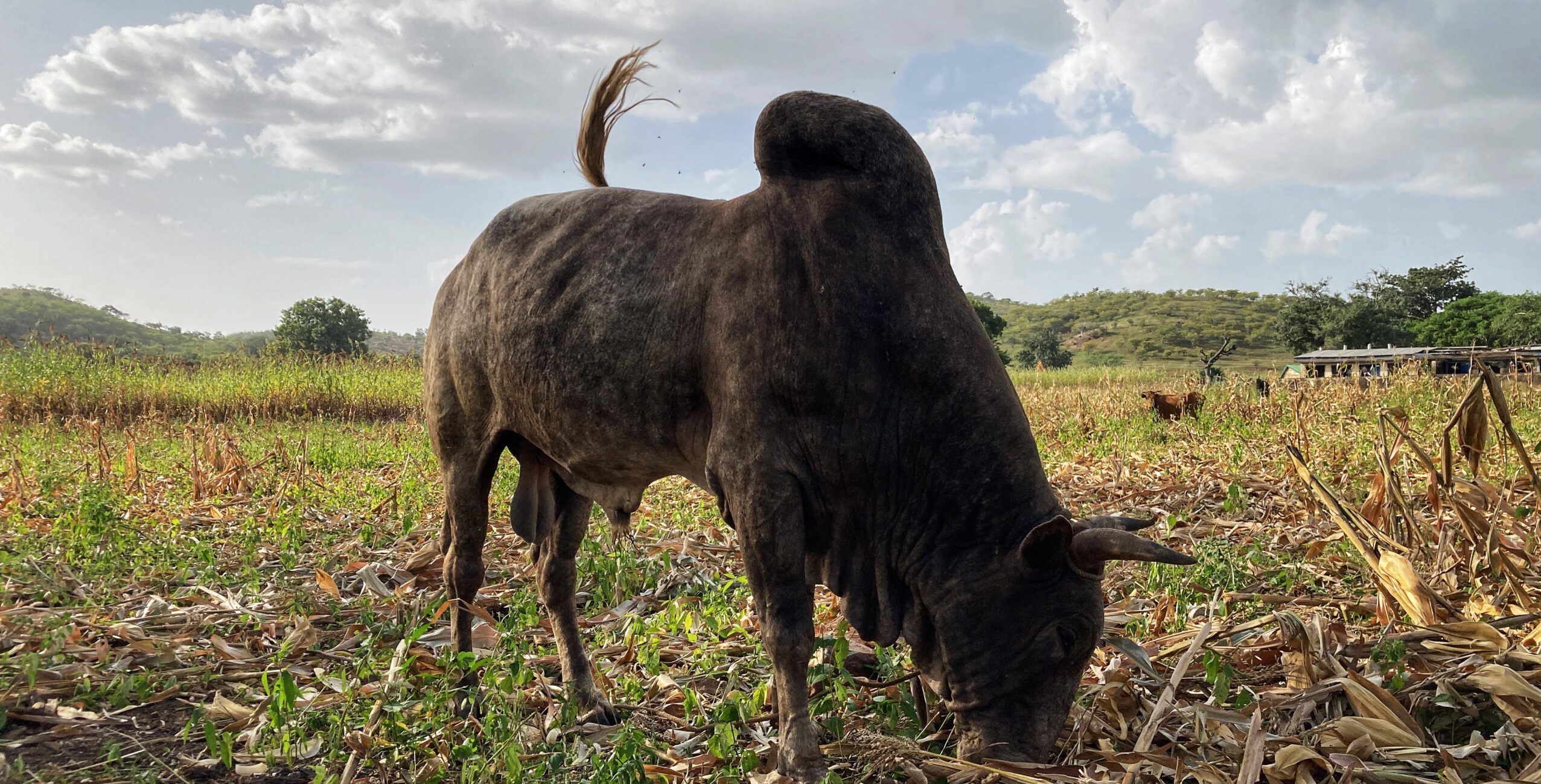
Once-sparsely populated land in central Ghana became coveted by both farmers and herders, who, unlike in the north, did not have the deep relations that make it easier to resolve inevitable disputes. When livestock wandered into fields, farmers would often kill the animals or report herders to the police, leading to mounting tensions between the two communities.
Sori No. 1, a settlement of 600 people is situated seven miles south of the town of Damongo in the Savannah region in central Ghana, a land of rolling hills bisected by rivers and outcroppings of forest amid plains of grass. Sambia, the young farmer at the center of the dispute last May, was born in Sori No. 1, but his parents were relative newcomers to the area, having arrived decades earlier searching for land to farm. When he was growing up in the early 2000s, he recalls, there was still plenty of land available to farm with few cattle.
When the first Fulbe families arrived in Sori No. 1 around 10 years ago from other parts of Ghana, the chief permitted them to settle just outside the village. In exchange, the Fulbe pay an annual tribute and look after the local elite’s livestock. The Fulbe mostly keep to themselves. As farmers have planted their fields closer to the hamlet, the Fulbe asked them to leave a buffer area. Everyone agreed—except for Sambia. “I was farming here long before the [Fulbe] arrived,” the 17-year-old protested, “they can’t tell me what to do.”
After speaking with Fulbe and Gonja communities leaders directly involved in the mediation, as well as Sambia himself, I found that the immediate spark for the incident last May occurred when Sambia killed a goat he found eating his five-inch high maize. A few days later, Sambia again found cattle dangerously close to his field. He drove the animals back toward the Fulbe compound, where he entered into a shouting match with the owner, an elderly man named Alagie. The shouting drew the attention of Alagie’s neighbor, Sambo, who happened to be the owner of the goat Sambia had killed, and a scuffled ensued. Sambia overpowered Sambo, but in an effort to disarm him, cut on his hand on Sambo’s machete. Winning the fight despite his injury, Sambia got on his motorcycle and drove into Sori No. 1, where he prompted the mob by shouting that the Fulbe were trying to kill him.
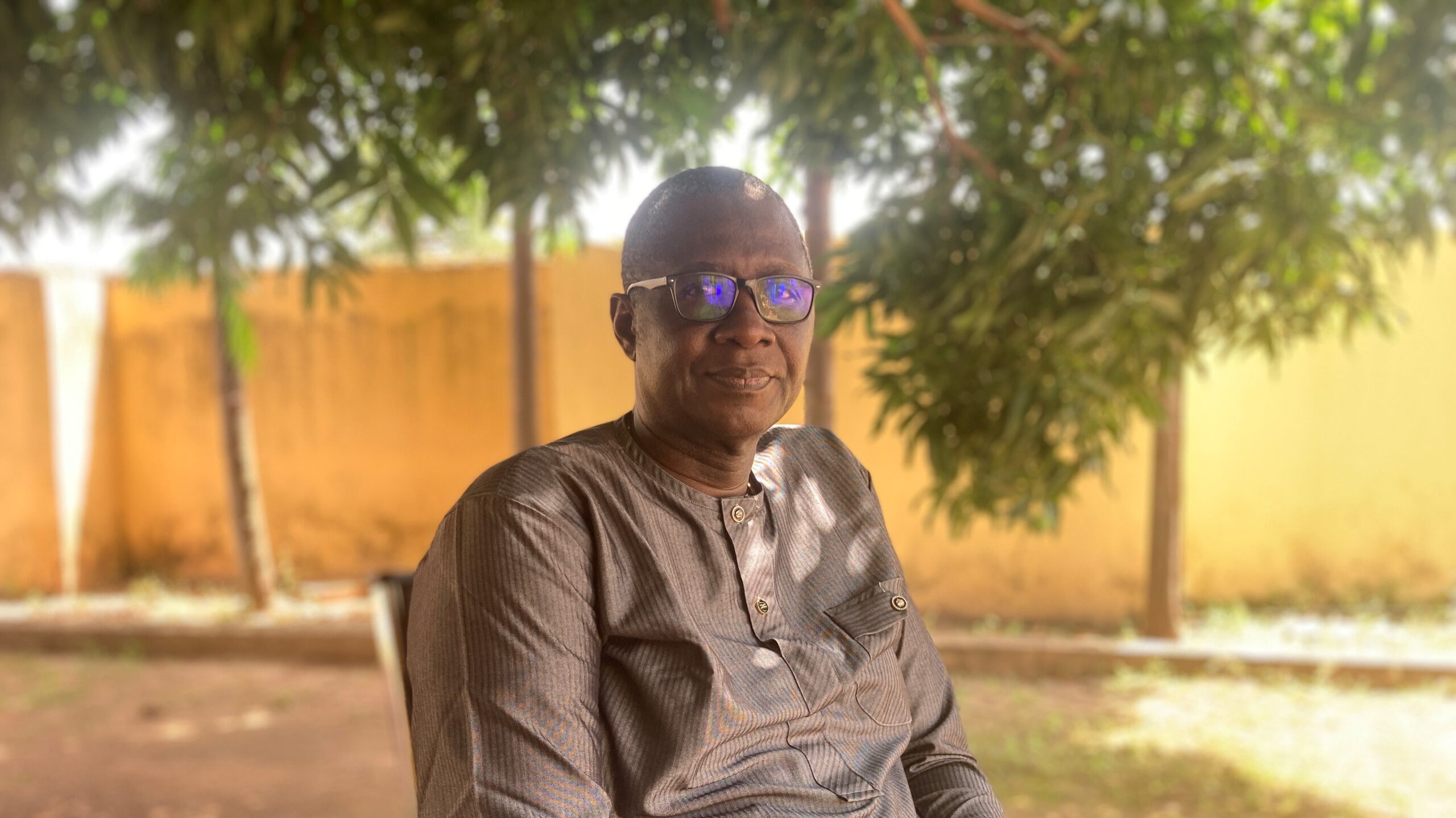
When I went over the story with Father Clement Aapengnuo, he shook his head somberly, saying it sounded familiar. Father Clement, as he is known, was for almost two decades the director of the Centre for Conflict Transformation and Peace Studies (CECOTAPS), a church-affiliated peacebuilding non-governmental organization based in Damongo. The crop destruction and livestock killing is only part of the story, he cautioned. “The deeper problem is the injustice that people face afterward.”
In rural Ghana, village chiefs—who are given the power to adjudicate local disputes by the constitution—are the first port of call for people seeking justice in non-fatal local matters. Once a case is brought to a chief, he is supposed to hear both sides, make his own inquiries into the matter, issue a fair judgement for restitution and ensure it is enforced.
However, both farmers and herders complain that chiefs are rarely neutral arbiters. Farmers say herders often bribe chiefs with livestock. Herders say chiefs often side with farmers, who are usually of the same ethnic group. Chiefs benefit financially from these conflicts because the party that brings them a case must pay a tax of between 50 and 500 cedi ($4 to $40). Chiefs often take a portion of the compensation they award, too.
If either side is not content with a judgement issued by a chief, it can bring the issue to court. But legal proceedings take money and time, neither of which rural farmers and herders have. “People have lost confidence in the system,” Father Clement said, “and therefore they take the law into their own hands.”
* * *
After two decades working in local peacebuilding in Ghana, Father Clement was aware of sporadic altercations between farmers and herders, but it was not until 2016 that he was approached by donors interested in the issue. “At the time, anti-Fulbe discrimination was so bad that I figured the best we knew was nothing,” he said. While researching the proximate and deeper causes of the violence, he started building relations with Fulbe communities around Damongo and began understanding the issues from their perspective.
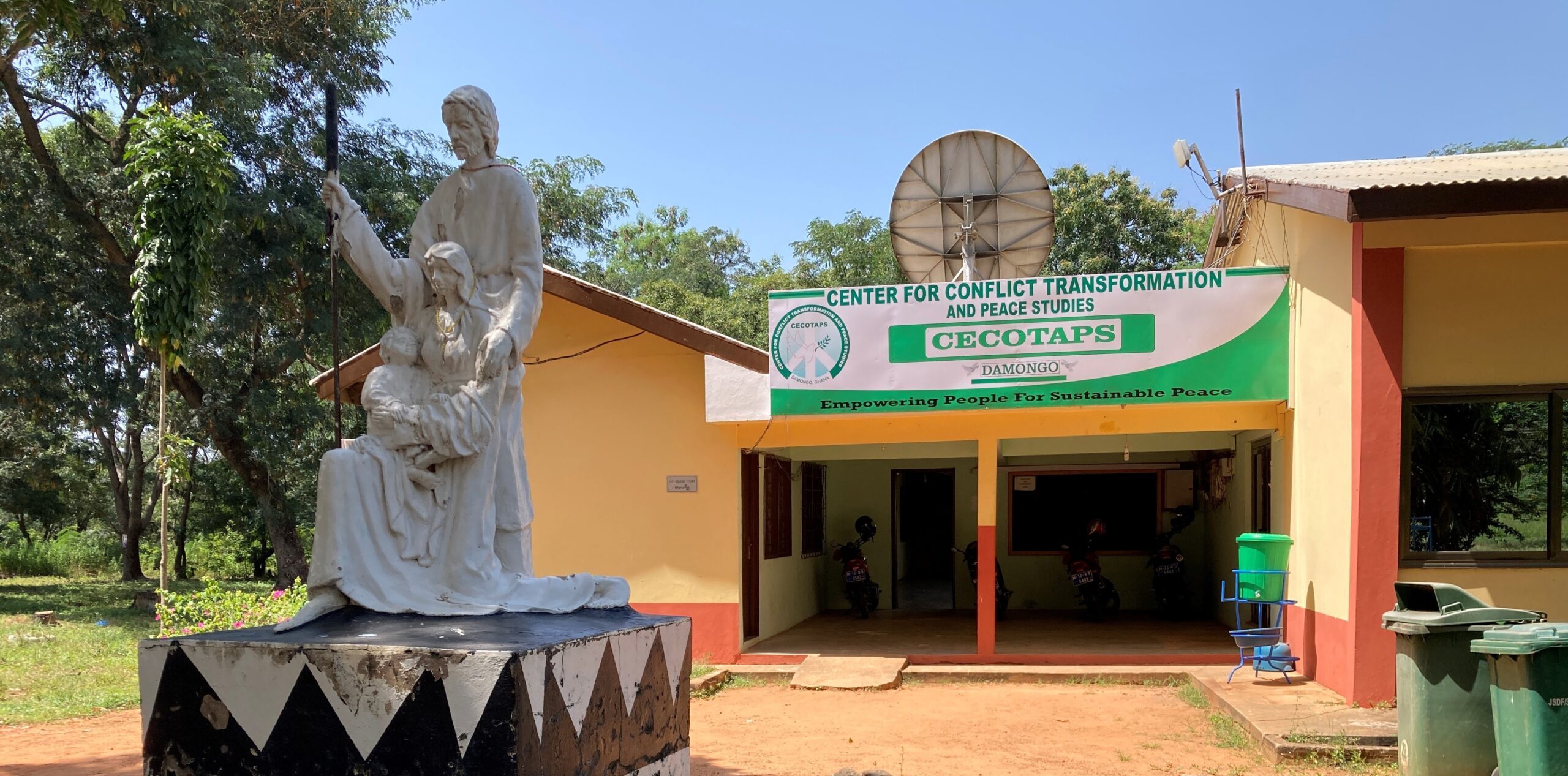
In 2021, CECOTAPS was approached by the Littorals Regional Initiative (LRI), asked to design a project that would address the deeper roots of the violence. LRI is funded and guided by the United States Agency for International Development, mandated to fund local projects that help countries like Ghana build resiliency in the face of expanding jihadist insurgencies in neighboring Mali and Burkina Faso. At the offices of Creative Associates International, LRI’s implementing partner in Ghana’s northern capital city Tamale, Muminu Mutaru, a senior program development officer explained to me that the organization was particularly interested in working with Fulbe communities perceived to be particularly vulnerable to jihadist recruitment. With LRI’s funding, Father Clement and the team at CECOTAPS began designing the mediation committees with the goal of finding ways for communities to solve disputes themselves without involving problematic local authorities.
Initially, CECOTAPS targeted five communities around Damongo where there were known to be issues between farmers and herders. Once the chief approves, the program starts with a community dialogue between 30 farmers and 30 herders, ideally with an equal gender balance. The mediators break up participants into groups and ask them to describe their relationships with the wider community, what others do to anger them and what they could do to reduce tensions. Then the groups share their ideas with the others.
“It can be very tense,” said Anita Zimpah, a programs officer at CECOTAPS. “When they come in initially, you can see from body language that there is anger and people are prepared to battle with words.” But after hours of discussion, people generally start to form some kind of acceptance of others’ perspectives, she said. “The dialogue helped us understand that both sides are being taken advantage of by the chiefs,” recalled Laar from Sori No. 1. “That’s when we saw that maybe it is better if we can solve things ourselves.”
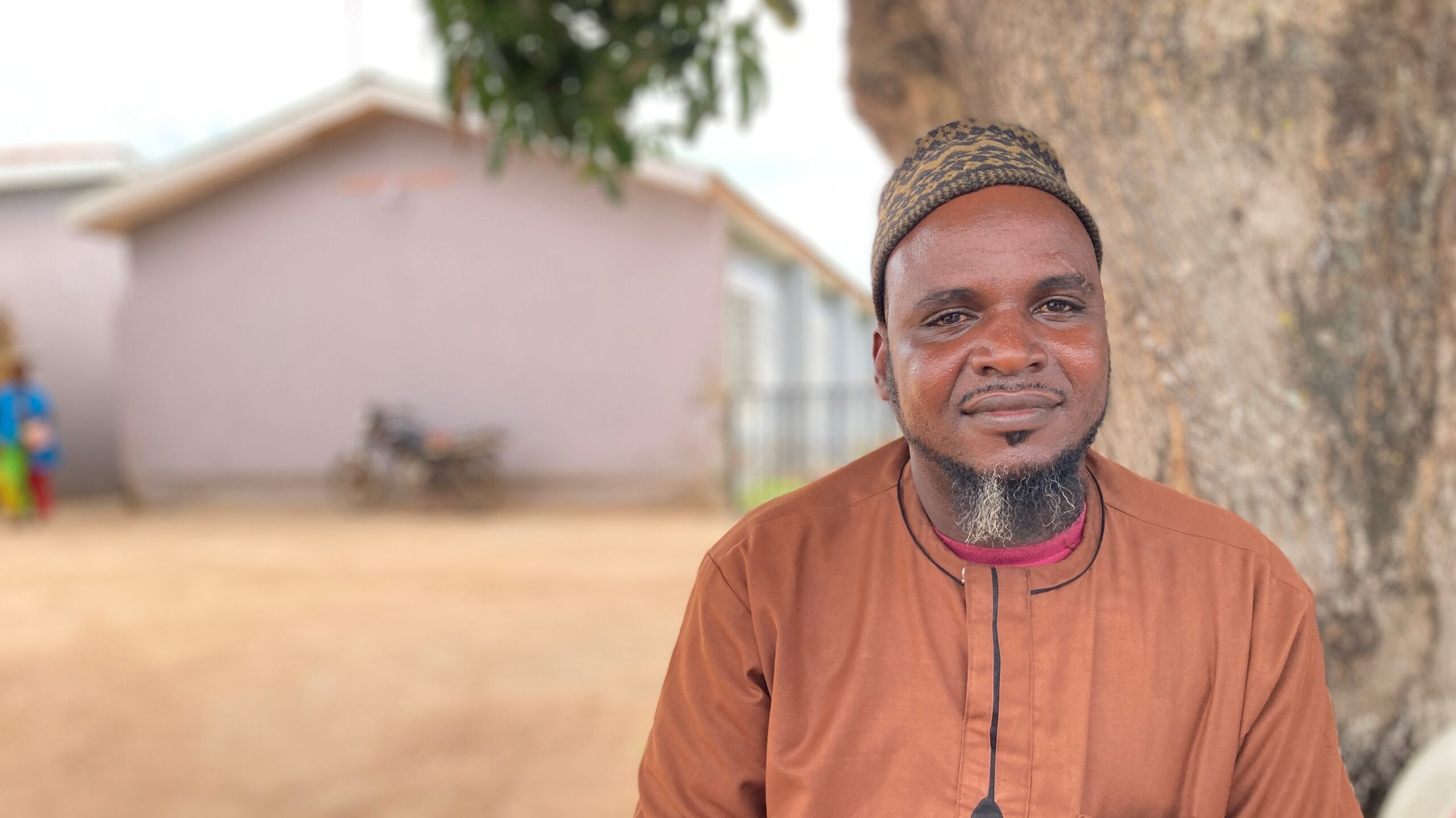
At the end of the community dialogue, participants are asked to choose six people from each side, three men and three women, to undergo further training and serve as a mediation committee. During a three-day course, participants are taught arbitration techniques and act out role-play scenarios about how to deal with different situations. “We learn to do the negotiation in a neutral space, no cutlasses, in the shade of a tree,” Laar explained. They are also taught to work only with people who come to them and not to seek out cases to mediate. In altercations where serious violence occurs, they are told to go to the police.
The pilot phase, which included Sori No. 1, wrapped up in October 2021 and was considered a success. More committees are now being established across central and northern Ghana through a partnership with the Regional Peace Councils, government affiliated bodies that organize the trainings and conduct follow-up assessments. As of the time of writing, 10 committees have been established and plans are in place to train 23 more. “Everyone wants these committees to work,” Mutaru told me. “Now we have other authorities approaching us and asking us to set up mediation committees.”
* * *
While the committees have undoubtedly helped some people resolve their disputes amicably, it is far too early—and perhaps ultimately impossible—to quantify whether they are addressing the deeper issue of justice. The mediators I spoke with around Damongo are optimistic about the program, but it became clear in our conversations that many of their mediations still end up in the chief’s palace.
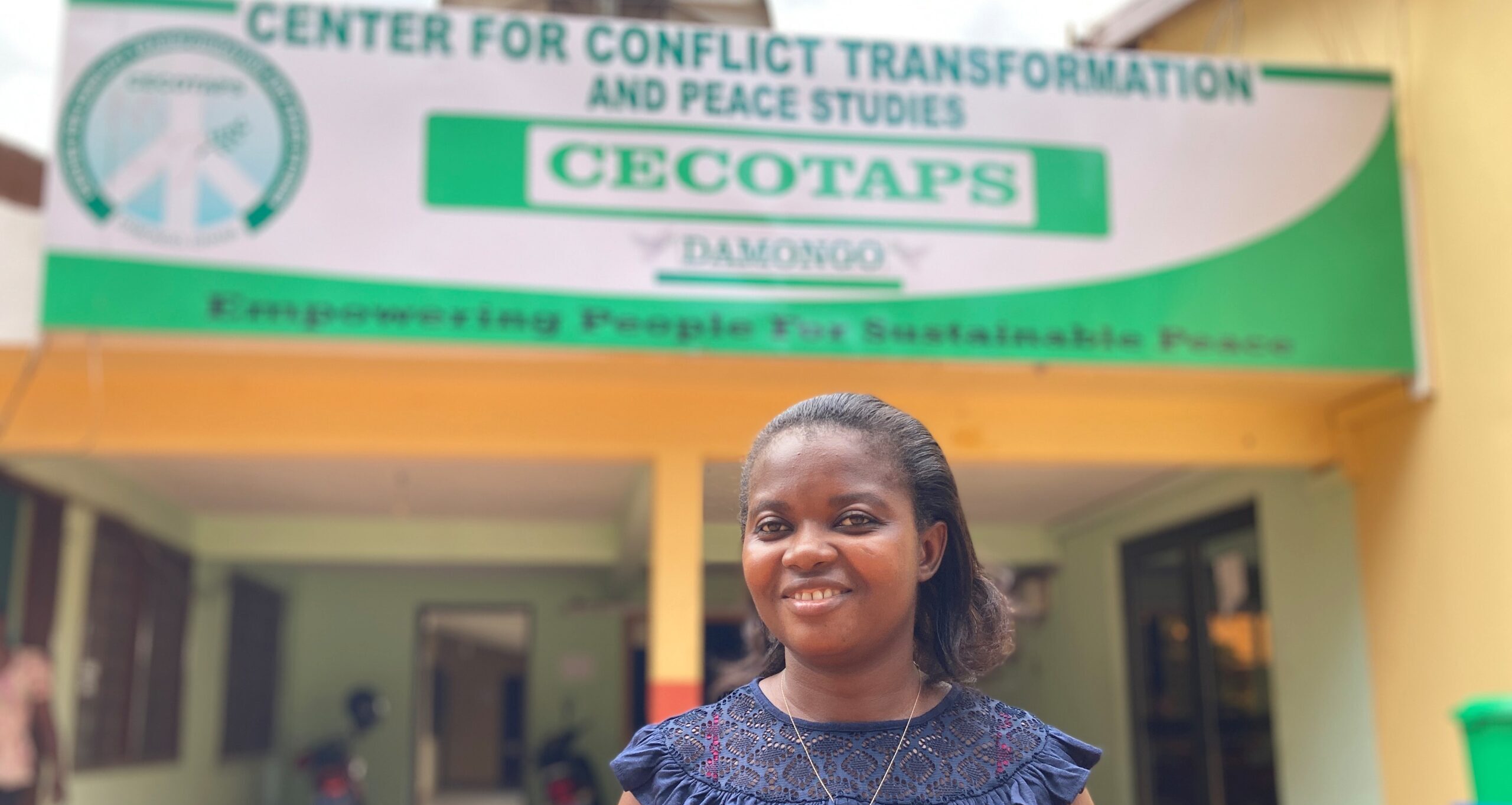
Following the altercation in Sori No. 1 last May, the mediation team sat down with Sambia and Sambo to negotiate a settlement. However, once Sambo learned that, according to Gonja custom, he would have to pay a steep fee for drawing Sambia’s blood, he decided to go to the paramount chief in Damongo instead to seek restitution for the killing of his goat.
Fearing he would receive no compensation from the paramount chief, Sambia tried to involved the police by showing them the wound he received. The police said that the injury was not grave enough to merit their attention and ordered him to resolve the issue with the chief. The chief, angry that Sambia had tried to go over his head to the police, ruled that Sambia should pay 500 cedi ($40) for the killing of the goat, leaving the crop damage by the goat unresolved.
The judgement left Sambia feeling aggrieved. He claimed the chief had been bribed by the Fulbe, an allegation the Fulbe deny. The chief did not make himself available for comment. The unsatisfying result prompted Sambia to engage the mediation committee to help solve the separate issue of the damage of his maize by the owner Alagie’s cattle.
The team revisited the field and assessed the damage at around 700 cedi ($56). Alagie and Sambia agreed to the deal and the payment was made. This year, Sambia said, he still plans to farm near the Fulbe settlement but wants to avoid interacting with Sambo.
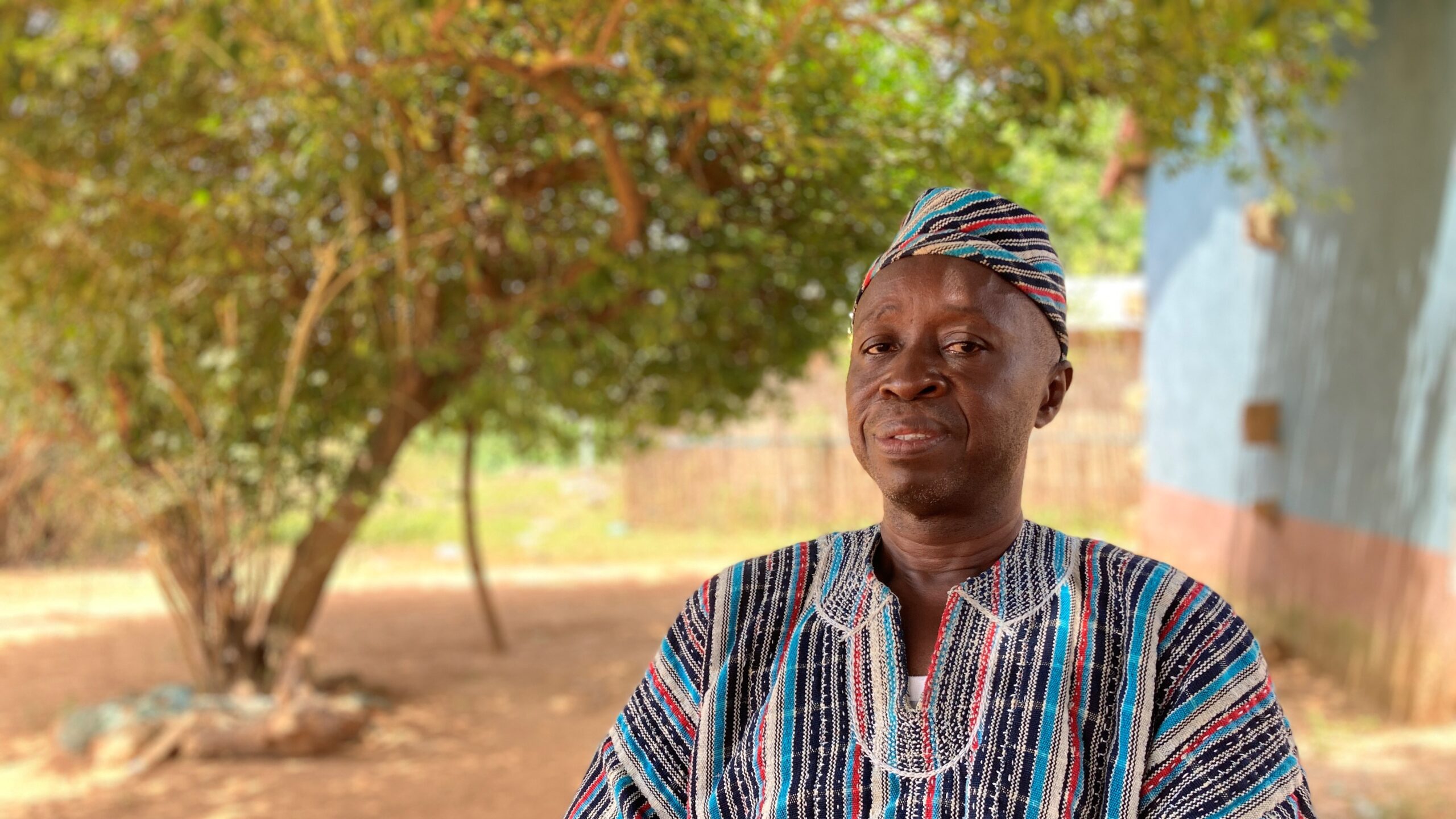
Ultimately, the mediation committees operate with the permission of local chiefs, so if a case if brought to the chief, the mediators must withdraw. In some cases, chiefs have become resentful of the program once they realize the committees are assuming some of their functions. Abdallah Ahmed, a chief from the Buipe traditional area 40 miles south of Damongo, has a good relationship with CECOTAPS but said that other chiefs are suspicious. “Where does your authority come from?” he said, voicing the concerns of his colleagues. “Are you trying to change the status quo?”
CECOTAPS is aware of the tension with the chiefs, and has recently tried to incorporate them into the program. Chiefs are now invited to the mediation training so they better understand the committee’s work and see how they can benefit their community. “We try to show them that the committees can actually help them maintain their legitimacy,” Zimpah at CECOTAPS explained. She cited the paramount chief of Busunu, a small town 24 miles from Damongo, who directs all cases involving farmers and herders to the committee and is apparently happy to remove himself from a contentious issue that could tarnish his reputation.
But as the committees have expanded outside Savanah region, they are encountering new problems. Six people from the village of Widnaba, a stone’s throw from the border with Burkina Faso, undertook the mediation training last October. While the farmers, and their chief, were excited about the committee’s potential, their Fulbe neighbors were more muted.
When I spoke to the Fulbe chief in their small hamlet outside Widnaba, he explained that in 2021, a gang of young men from the nearby town of Zebilla attacked their settlement, burning huts and stealing money following a banditry attack on a motorcyclist. As we spoke, the Fulbe revealed that among those who attacked the village were the same people who previously assessed instances of crop damage, charging exorbitant rates.
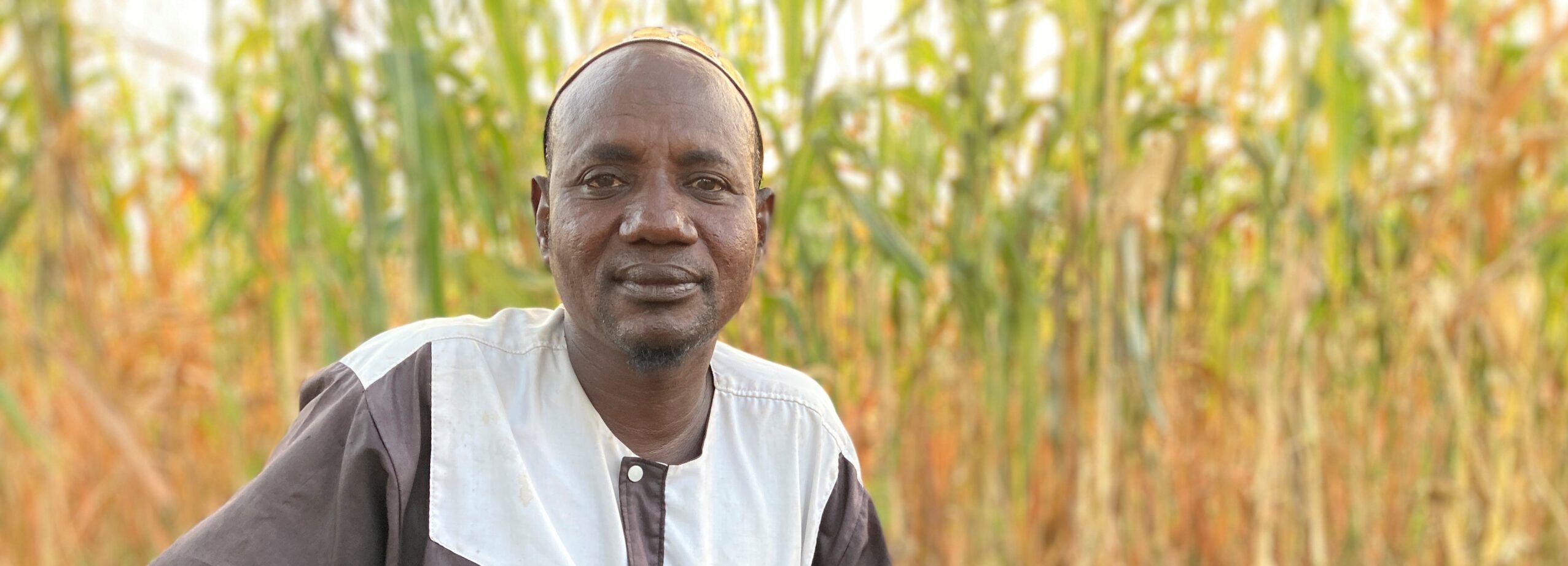
The Fulbe said they supported the idea of the mediation team but were unsure how the gang from Zebilla (whom they referred to as Kogleweogo, a reference to community militias in Burkina Faso that are accused of abuses against Fulbe communities), would react. Apparently, the Fulbe did not raise the issue during the mediation session because they did not want to upset the chief of Widnaba, who has distant relatives in the group, and who authorized the Fulbe settlement. The Regional Peace coordinator who facilitated the dialogue confirmed the issue did not come up during the mediation session, but that the group would continue conducting outreach with local youth leaders.
* * *
Ultimately, the mediation committees run the risk of falling into the same traps many development projects do. In this case, the program presents itself as a community-based solution separate from local politics. The reality is that the project—by attempting to change the way justice is administered on a local level by offering alternatives to local chiefs—is highly political. Father Clement and the staff at CECOTAPS are aware of the nature of their work, but as part of an NGO funded by the American government, understand they can’t be seen as being political.
Ultimately, the program represents the further “NGOization” of governance. NGOization in this context refers to the process of NGOs and civil society groups taking over key functions of government, such as justice or health care delivery. That can be problematic because NGOs and civil society groups, many of which do good work, are more accountable to their (typically Western) donors than to the people they are supposed to serve.
A case in point, as Father Clement pointed out, is that CECOTAPS, which relies on outside funding, could not have done any outreach with Fulbe communities until that activity became a donor priority. Furthermore, taking over basic government functions—like justice provision—does not help build the kind of state that can deliver for its people.
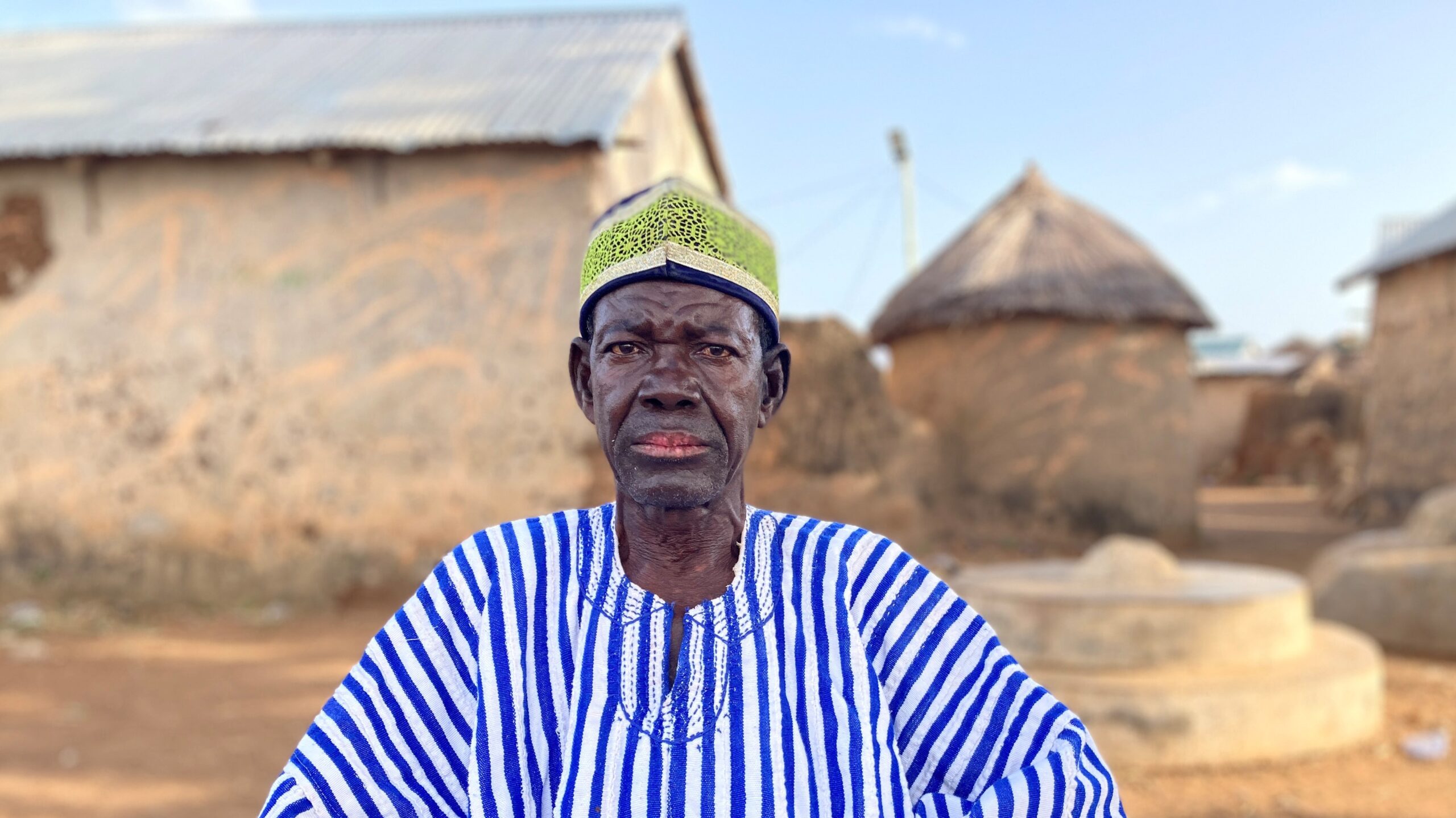
The security rationale for the project could also present problems. While Fulbe communities want to be a part of various development projects, there is a sense among some that NGOs are working with them only now because they are afraid they will join terrorist groups. Some are worried that even a casual connection could be misinterpreted by non-Fulbe and add to the discrimination that they already face. “We want to be engaged,” a Fulbe man from Widnaba who did not want to be named told me, “but not just because people are worried about terrorism.”
While the mediation teams navigate complicated local politics, multiple participants stressed to me that simply building relations between Fulbe and their neighbors was a positive development. The chief of Widnaba, Akutam Fuseini, explained that during the community dialogue, people from the farming community heard for the first time that the Fulbe saw themselves as Ghanaians. “After that, we can’t treat them as foreigners anymore,” he said. “Once someone has lived with you for 15 years, they can’t be a stranger.”
Meanwhile, back in Sori No. 1, Laar said that before the program, villagers did not even know the Fulbe had their own leaders whom they could approach. “Ever since the dialogue, we attend each other’s social gatherings, we go to their baptisms, they come to our weddings.” In the distance, a Fulbe woman chatted with other women selling vegetables outside a small shop. Laar pointed in their direction, saying that would not have happened before the dialogue. “We benefit from them, they benefit from us,” she explained. “We are different peoples, but we must live united as one.”
Top photo: Mercy Laar (center) with two other Gonja members of the mediation team that intervened in Sori No. 1

